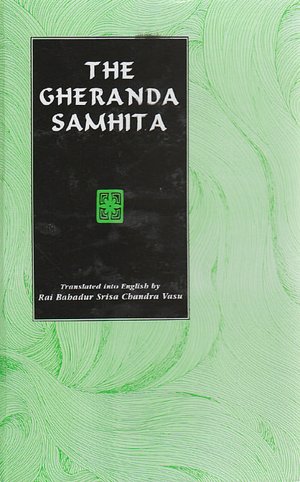We started off by looking at the Haṭha Yoga Pradīpikā which led to the conclusion that:
Now let's look at the Gheraṇḍa Saṃhitā (धेरंड संहिता).
Notice here in chapter 5.46 that Ujjāyī is listed as a Kumbhaka (breath retention), just as it is in the HYP:
And here is GS the description of the technique (5.69-70):

Conclusion:
If Ujjāyī is one of the eight Kumbhakas and Kumbhakas are breath retentions, then Ujjāyī is a breath retention. If our breathing during practice does not include breath retentions, then it cannot be called Ujjāyī.
Read the Gheraṇḍa Saṃhitā
Gheraṇḍa Saṃhitā PDF
If Ujjāyī is one of the eight Kumbhakas and Kumbhakas are breath retentions, then Ujjāyī is a breath retention. If our breathing during practice does not include breath retentions, then it cannot be called Ujjāyī.Here is a link to the post: Part 1 = Haṭha Yoga Pradīpikā (हठ योग प्रदीपिका)
Now let's look at the Gheraṇḍa Saṃhitā (धेरंड संहिता).
Notice here in chapter 5.46 that Ujjāyī is listed as a Kumbhaka (breath retention), just as it is in the HYP:
And here is GS the description of the technique (5.69-70):

Conclusion:
If Ujjāyī is one of the eight Kumbhakas and Kumbhakas are breath retentions, then Ujjāyī is a breath retention. If our breathing during practice does not include breath retentions, then it cannot be called Ujjāyī.
Read the Gheraṇḍa Saṃhitā
Gheraṇḍa Saṃhitā PDF





